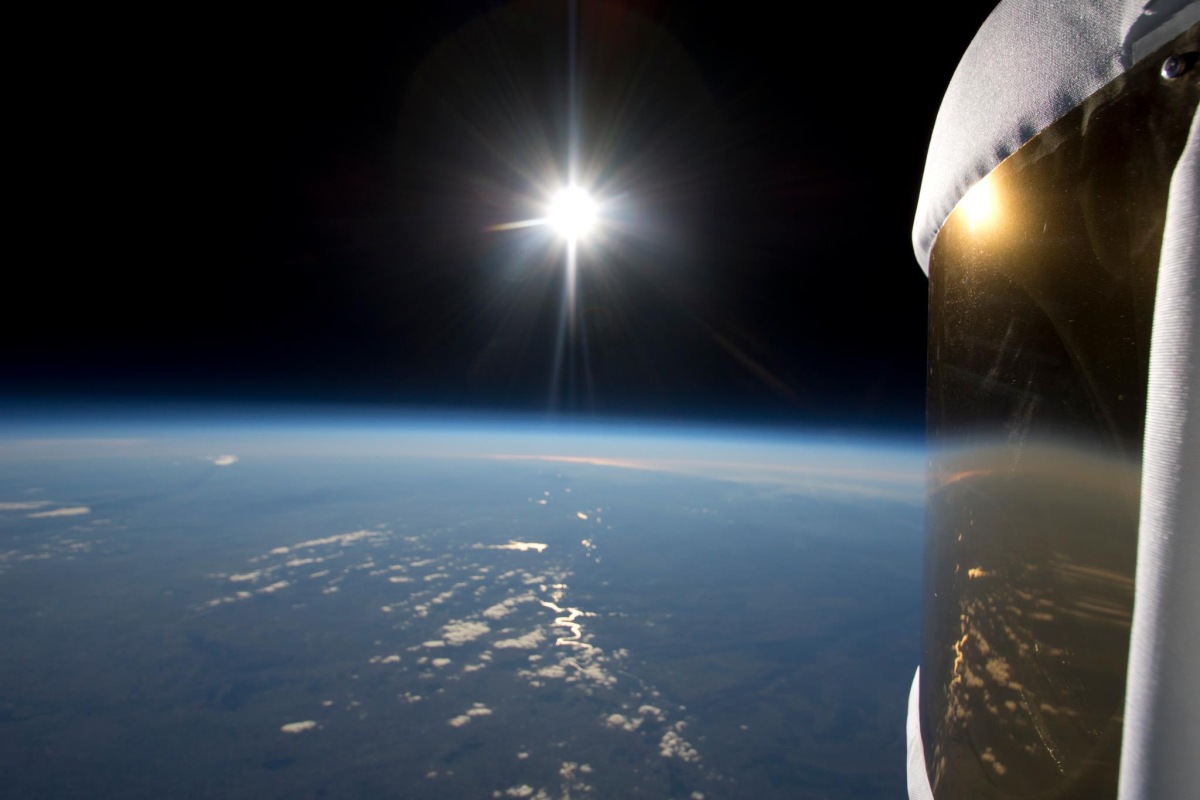Purpose of the flight and payload description
The objective of the flight was to test the behavior, strength and suitability of an inflatable pressurized payload capsule for microbloon, a mockup of the Bloon capsule that the spanish company Zero To Infinity is developing for manned flights in the near future.
The capsule mockup used in this test denominated microbloon 2.0, was a 2 meters diameter pressurized pod designed by zero2infinity as a scaled model of the full bloon pod that will carry 4 passengers and 2 pilots to 36km, providing near space conditions for over 2 hours.
The zero2infinity team designed and built all the launch equipment as well as the pod with panoramic windows. The primary aim of the test was to validate launch procedures and, if everything was nominal and the flight was completed, to perform on-board remote robotic tests and Environmental and Life Support System testing for future inhabited flight scenarios for bloon's scientific, technological and experiential missions. Although unmanned, the pod included a small ergonomic chair on which was allocated an articulated figure of a robot called ''Ironman" which was provided by the Universidad Jaume I from Castelló, Spain. No information was disclosed if the figure had a specific technical or scientific purpose.
Zero2infinity lead electronics engineer, Jose Luis Garcia built a new telemetry and video system for this campaign. The flight also employed a telemetry system designed and build by Paolo de Bernardis from Italy. Both systems performed perfectly.
Video footage of the launch and flight
Details of the balloon flight
Balloon launched on: 11/12/2012 at 13:10 utc
Launch site: Virgen del Camino Airport, León, Spain
Balloon launched by: ISTAR (International Science Technology And Research)
Balloon manufacturer/size/composition: Zero Pressure Balloon TIFR 46.000 m3
End of flight (L for landing time, W for last contact, otherwise termination time): 11/12/2012 at 17:10 utc
Balloon flight duration (F: time at float only, otherwise total flight time in d:days / h:hours or m:minutes - ): 4 h
Landing site: Encinas de Esgueva, Valladolid, Spain
The balloon was launched from the airport of Virgen del Camino in León, Spain at 13:10 utc on November 12th, 2012. After release the balloon initially flew south as it was ascending, then moved eastward during the 2-hour-float at 31.8 km until it finally initiated a gentle descent with parachutes and landed in Encinas de Esgueva at 17:10 utc, where the recovery team was waiting and recovered the capsule and the balloon.
All the operations and recovery were led by Steven Peterzén, from The ISTAR Group, a leading expert in stratospheric balloons while the weather forecast and trajectories were calculated by Pierre Dedieu, a meteorologist with years of experience with CNES's (the French Space Agency) high altitude balloon program.
External references
- �Bloom' no es un �bloof' Diario de Leon, Nov. 13, 2012
- Bloon project Zero to infinity website
- Microbloon 2.0 Soars to the Edge of Space Zero to Infinity press release
11586If you consider this website interesting or useful, you can help me to keep it up and running with a small donation to cover the operational costs. Just the equivalent of the price of a cup of coffee helps a lot.






